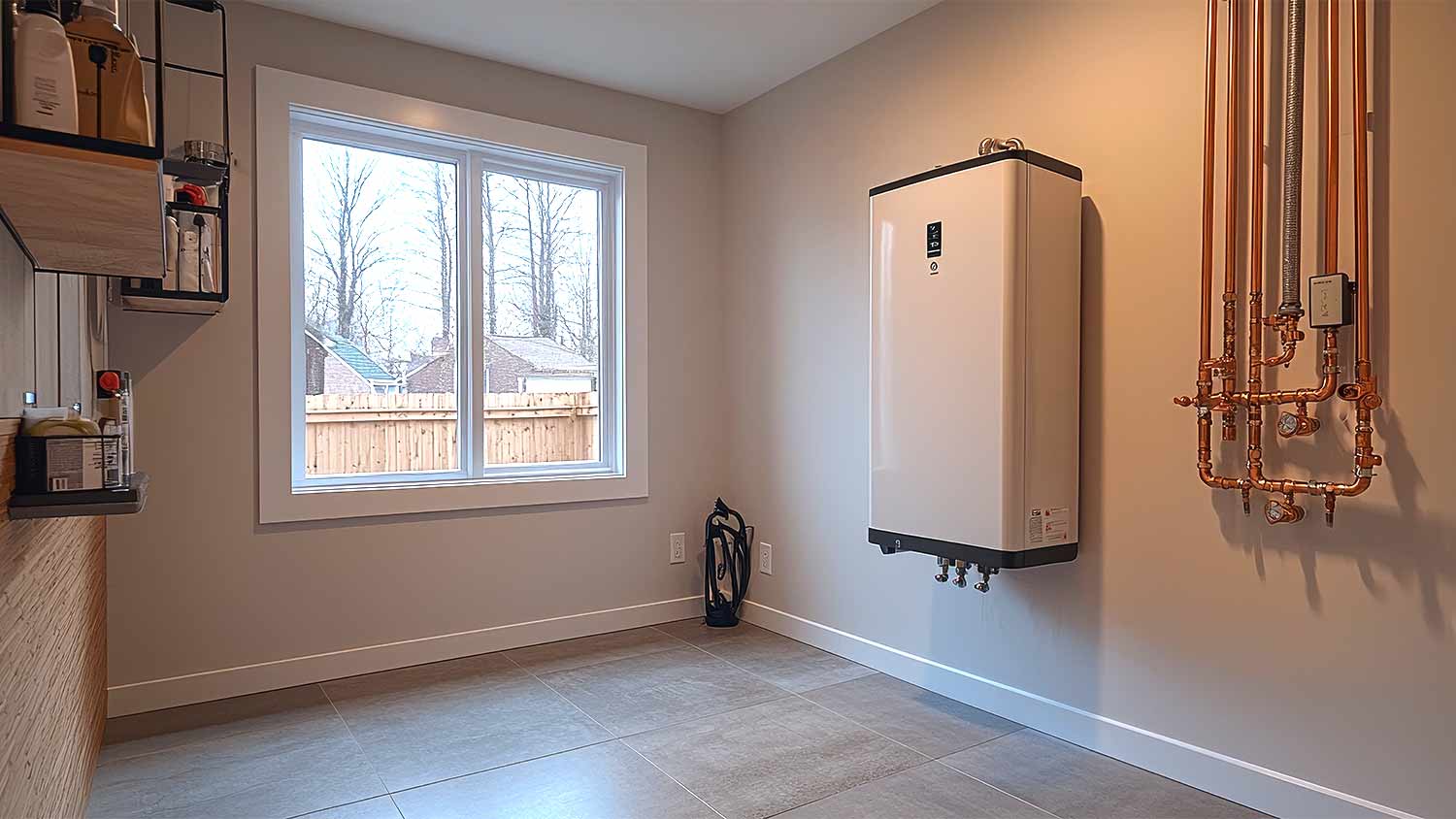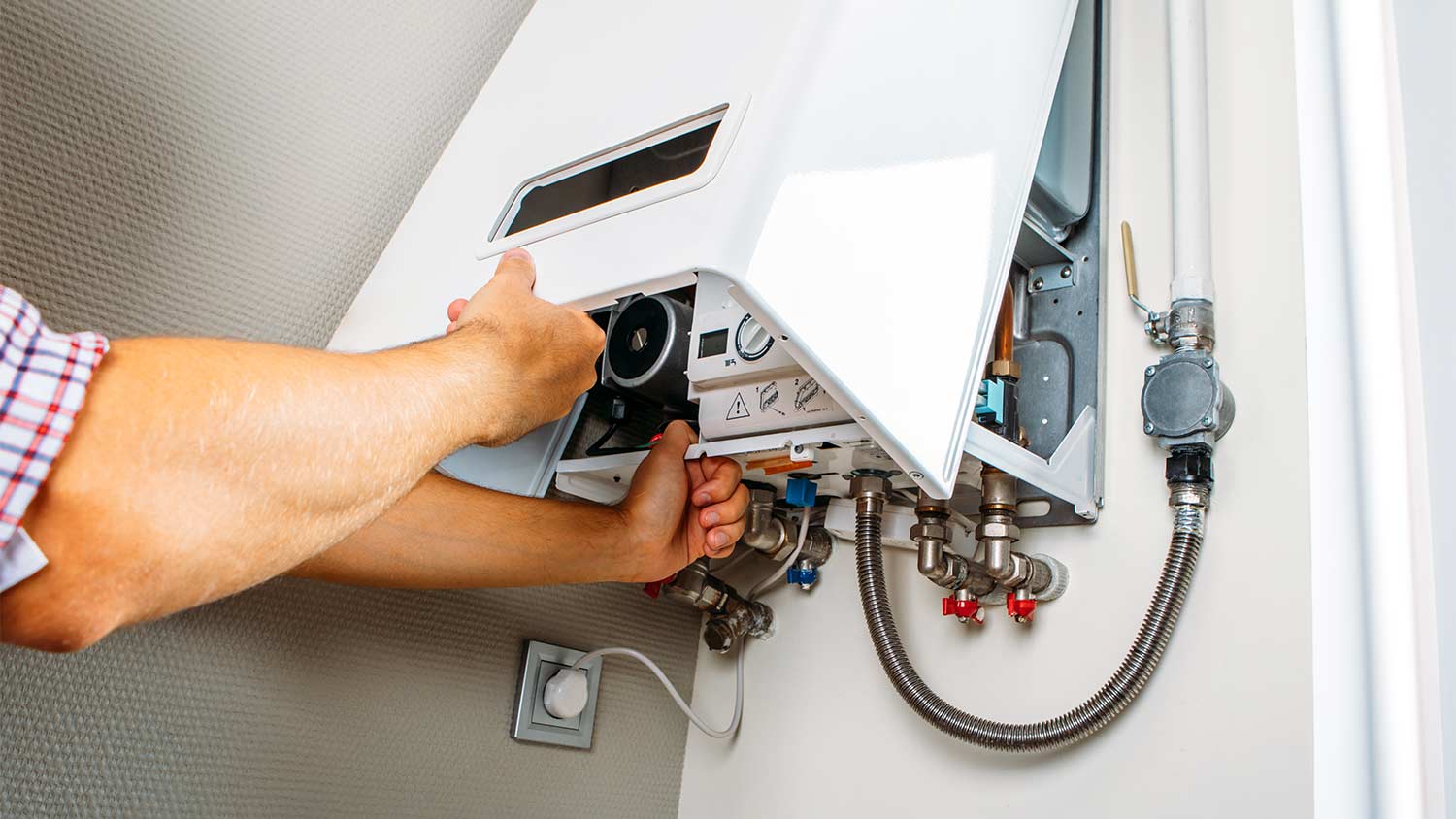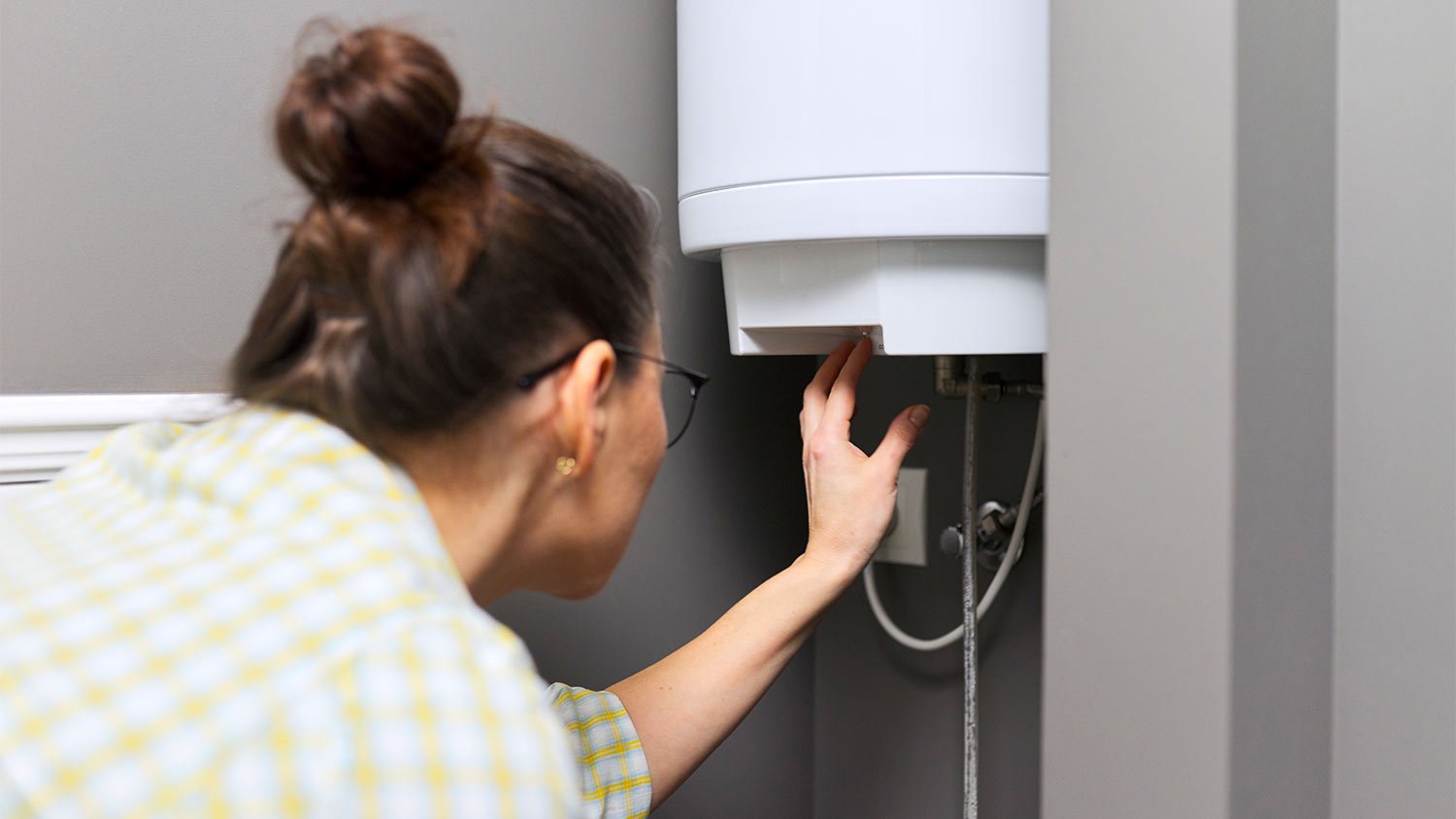How to Replace a Gas Water Heater In Your Home
DIY saves cash, but it is risky business


This project requires a lot of experience, so we don’t recommend DIYing it. Hire a pro with the special skills and tools necessary to complete the job safely.
- Garden hose
- Pipe wrench
- Screwdriver
- Appliance dolly
- Metal sheets
- Gas water heater
- Sheet metal screws
- Gas leak detection solution
A new gas water heater can reduce waste and save energy, benefiting you in the long run. If your unit is past its lifespan, replacement is the best solution. DIYing replacement can be a worthwhile job if you have the skill to tackle it. Learn how to replace a gas water heater and when it’s best to hire a pro.
Turn Off the Water and Gas Valve
 Photo: Serhii / Adobe Stock
Photo: Serhii / Adobe StockFirst, you should shut off the heater's water supply. Then, locate the gas valve on the water heater and turn that off as well.
Drain the Tank
Near the bottom of the water heater, attach a garden hose to the drain valve. Open the drain valve slowly and let the water drain from it. You can empty the water into a floor drain, basement sink, buckets, or route it outside away from the home's foundation. Let the water drain completely before removing the hose and closing the valve.
Disconnect the Water and Gas Lines
Use a pipe wrench to disconnect the water line and the gas line. If the gas line is a black iron pipe, disconnect the gas line at the union fitting. For flexible pipes, disconnect at the flare fitting.
Disconnect the Draft Hood
Connected to the vent hood is a draft pipe, which is connected with screws. Use a screwdriver to disconnect the draft hood. Check if the vent is rusted or damaged and, if it is, consider replacing it.
Replace the Water Heater
Remove the old water heater using an appliance dolly, or enlist someone to help you move it. The unit will be heavy and it's not recommended to move it on your own without assistance. Clean the floor underneath and place the new water heater. Align the heater to allow easy access to controls and connections.
Install Fittings and Lines
Follow the manufacturer's instructions for connecting all fittings on the heater, including the cold-water inlet, heat outlet, and heat trap fitting pipe. Use a pipe wrench to tighten the connections.
Then, connect the gas line to the gas burner control valve. If the valve is damaged or deteriorating, consider replacing it. A water heater gas valve replacement cost ranges between $150 and $550. Once connected, turn on the water supply.
Check the Gas Connection
As the water fills the tank, test the gas line for leaks. Open the gas supply valve and use a gas leak detection solution to check for leaks. Apply the solution to the fittings and see if bubbles form. Bubbles will form on the surface if there's a leak. You’ll need to tighten or refit the joint to fix the leak.
Reconnect the Draft Hood
Put the draft hood in place on top of the heater over the exhaust opening. Slide it into the vent pipe and use sheet metal screws to secure it. If the new water heater is taller than the older unit, you may need to trip the vent pipe using metal shears.
Mistakes to Avoid When Replacing a Gas Water Heater

When replacing a gas water heater, mistakes can lead to safety hazards or future headaches. Here's what to avoid during replacement:
Turning off the gas and water supply: Neglecting to turn these supplies off can cause dangerous leaks or water damage.
Improper venting. Lack of ventilation can result in carbon monoxide buildup inside the home:
Building code and permits: Skipping checking local codes or failing to obtain necessary permits can lead to fines or having to redo the installation to meet regulations.
Rushing connection. Rushing through connections or failing to test for gas leaks after installation can create serious risks. Take your time and double-check each step.
When to Replace a Gas Water Heater

The average lifespan of a gas water heater is between 8 and 12 years, so it should be replaced around this time, especially if it’s struggling to provide consistent hot water. Signs the unit is deteriorating include rust-colored water, strange noises like popping or rumbling, or visible leaks around the tank.
An unexplained spike in energy bills can indicate that the heater is inefficient and costs more to operate. Repairs on older units can become more frequent and expensive, so it's more cost-effective to invest in a new unit rather than continuing to make do with an older one.
DIY vs. Hiring a Water Heater Pro
Replacing a gas water heater yourself can save money, but it’s a complex job that comes with risks. If you already know how to replace a water heater, you can tackle the job. You should be comfortable working with gas lines, plumbing, and venting systems. Mistakes in any of these areas can lead to gas leaks, water damage, or dangerous carbon monoxide exposure.
If you have some plumbing experience, a DIY approach can be rewarding. However, to guarantee everything is installed up to code, hire a local water heater installer. A pro can handle permits, ensure adequate venting, and test the system, offering you peace of mind.
"To prevent carbon monoxide exposure from a water heater, make sure it is properly ventilated. You should also have it inspected and cleaned every year and install a carbon monoxide detector nearby. If you smell gas—which can mimic the scent of rotten eggs—evacuate immediately and call your gas company."
Frequently Asked Questions
Homeowners' insurance covers water heaters under certain circumstances. If your water heater is damaged due to a covered event, like a fire or burst pipe, your policy may pay for repairs or replacement. However, insurance won’t cover wear and tear, old age, or neglect. If a malfunctioning water heater causes water damage, your policy may help with cleanup and repairs, but not fixing or replacing the heater itself unless the damage resulted from a covered event.
Yes, a water heater can be replaced in a day and can take between two and three hours to install from start to finish. Even if you encounter extra tasks that need to be completed, the job can still be completed in one day.
If your gas water heater is over 20 years old, it should be replaced. Gas water heaters can last up to 12 years and while they can exceed this expectancy if well-maintained, a heater that's 20 years old would require replacement. The heater is unlikely to run as efficiently as a new model and could be more expensive to do so.





















